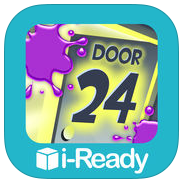
TCS Math Specialist Tom Pittard explains computational fluency
In last month’s post I talked about the importance of fact fluency and how, unfortunately, the old-fashioned memorization method isn’t the best way to learn math. As neuroscientists have learned more about how the brain and learning work, educators are learning better ways to talk about and teach math.
Learning facts in isolation requires the brain to retrieve each fact from a separate place and then plug it to a different context for each new problem. Research leads educators to place greater value on the ability to think flexibly about the contexts surrounding the isolated facts; think critically about the most efficient way to solve a problem; and even create a way of our own, instead of just blindly follow a rote procedure that we don’t really understand. And really wouldn’t we all rather have people with those skills around us all the time?
This sort of thinking is what we mean when we use the term “computational fluency.” More specifically, we are looking to help students grow in three main arenas: efficiency, accuracy, and flexibility:
Efficiency means that students can apply a strategy without getting lost in the steps or logic of a method and keep track of subproblems to produce results easily.
Accuracy requires students to apply knowledge of number facts, as well as other important number relationships, and double-check their results.
Flexibility suggests that students can choose an appropriate strategy for the problem being solved and use another method to verify their results. This requires knowledge of more than one way to solve any type of problem. As students consolidate ideas, they develop a more firm application of procedures and when to use them.
Computational fluency requires a large repertoire of number relationships (including, operational fact “families”), but it also needs a solid understanding of the meaning of each operation and its relation to each other. For example, multiplication can be expressed as repeated addition and is the inverse of division, which can be expressed as repeated subtraction.
Another computational fluency requirement is a thorough understanding of the base ten number system and how each operation impacts the structure of a number in the place value system. For example 237 + 10 becomes 247, while 237 x 10 becomes 2,370.
According to the National Council of Teachers of Mathematics publication “Principles and Standards for School Mathematics”: “Students exhibit computational fluency when they demonstrate flexibility in the computational methods they choose, understand and can explain these methods, and produce accurate answers efficiently.”
If you want to help your child develop more than just a large bank of memorized facts, don’t just drill them on fact after fact for the entire ride to school in the morning. (Yes, you can still do this for part of the ride to review facts that they’re learning, if you really want to. It won’t hurt them, unless you yell at them for taking too long.)
Try using this set of three questions all throughout the day, in as many different settings and situations as you can.
- What’s the answer?
- How’d you get that? Or, what were you thinking to get that?
- Can you get that same answer another way?
This line of questioning can do several things. 1) It lets them know that this sort of thing is important to you and, ultimately, that is one of the strongest motivators there is (believe it or not). 2) It can be used with any sort of situation, not just simple fact recall, but any problem they (or you) are facing. 3) If you don’t tell them when they are right or wrong, but just ask them for their thinking and verification, it allows them to either validate or correct their own thinking (and pay attention to their own thinking). 4) It provides you a quick way of knowing how well they can do this sort of thinking now while encouraging its growth and development for later.
Check out these resources that can help your child(ren) with fluency over the break:
You can also download Door 24 Plus, a free app:
While it does have a time demand component that is less than ideal, the fact that it is in a game setting, keeps the actual stress level manageable (for most). It also has two separate games to attack both fact fluency and computational fluency.
Happy Holiday Math!
Tom
Remember to check out Tom on Twitter @tompitttcs










